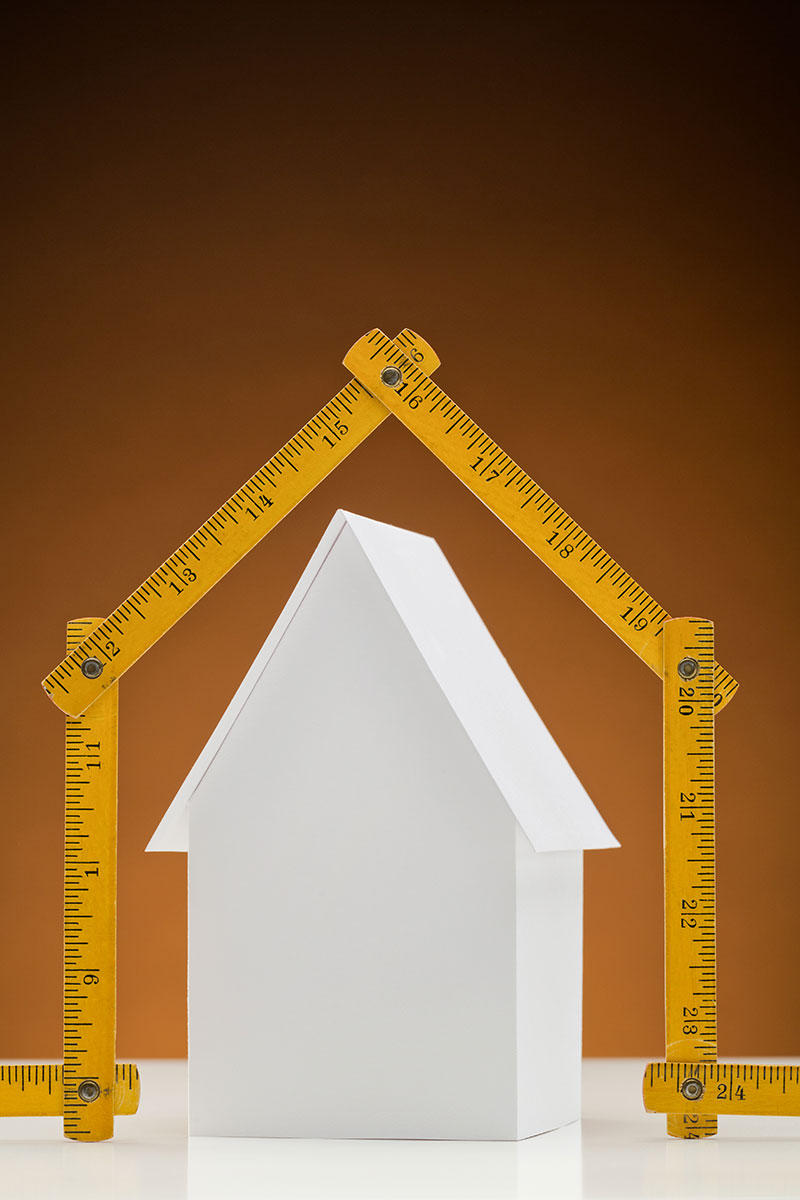Square footage is simple, right? Wrong. One would think that a square foot is an exact thing without ambiguity – but then what would the world of commercial real estate be like without some ambiguity to keep things interesting? This post comes to us from Grayson Powell, the managing partner at, Coldwell Banker Commercial Sun Coast Partners along the North Carolina coast.
Depending on how you look at it (or who’s doing the talking), a square foot can actually come in different varieties, and it’s important to understand them because they also represent different values when calculating per square foot costs in leasing and purchasing deals.
Three types of square feet
In most cases, square footage references fall into one of three categories:
Useable square feet (USF)
From the inside of your walls to the inside of your other walls, useable square footage is basically the space that your business operates in. This typically does not include common areas in the building, like lobbies, stairs and hallways. However, spaces like restrooms and hallways within your business space are counted as useable square footage. For example, if one tenant occupied an entire floor of an office building, the restrooms and hallways connecting them would be considered useable square footage if other tenants in the building did not have access to these areas.
Rentable square feet (RSF)
This calculation is based on the USF plus a pro-rata portion of the common areas. Since multiple tenants share the use of the common areas, they are also expected to share the expenses for that square footage; expenses like the costs of landscaping, waste management and building maintenance are usually rolled into the rentable square footage pricing.
Gross square footage
This is measured from the face of the exterior walls to the face of the opposite exterior walls. This calculation is generally only used for a free standing building in which there is only a single tenant.
The add-on factor
The square footage associated with the common area square footage (the difference between the USF and the RSF) is called the add-on factor (aka load factor; aka common area factor). The add-on factor is the square footage of the common area as it relates to the total square footage of the building. If a building is 10,000 total square feet and the common areas are 1,000 square feet of that 10,000 square feet, then the add-on factor is determined by subtracting the common area from the total square feet and then dividing the common area square footage by the useable square footage.
1,000 sf / (10,000 sf -1,000 sf) = 11.11%
There are times, however that the calculation is not actually used and the add-on factor is just determined by what’s competitive in the market at any given time. Here’s a typical exchange:
Potential tenant: “What’s the add-on factor for the common areas?”
Building owner: “15%”
Potential tenant: “Oh, OK. That sounds right.”
Of course, this arbitrary number is probably not an accurate representation of the building’s true size or efficiency.
Tripping over your feet
So, if you go out and look at three different buildings and three different landlords or agents are basing the base rent and operating expense pass-through using three different baseline standards, you’re obviously not getting an apples-to-apples comparison. One price might sound substantially lower, but actually be higher when you factor in the overall efficiency of the building.
There is an industry organization called the Building Owners and Managers Association (BOMA) that has published what are supposed to be standard calculation guidelines developed to create easy apples-to-apples comparisons, but the reality is that the BOMA standard is not strictly enforced and some professionals don’t even realize it exists.
Standing on your own square feet
The cost per square foot can be a valuable ratio and does offer a decent baseline number for comparison purposes, provided that all of the calculations are made in a consistent manner producing apples-to-apples unit costs. There are a lot of factors to consider when comparing and choosing commercial space – and the square footage cost is just one of them. However, the per-square-foot cost is obviously an important factor and certainly should be part of the decision-making process. Therefore, my advice is to be sure you are clear about what the stated per-square-foot cost actually means. Here are a few questions that will help to ensure clarity and transparency:
Which category of square feet is being quoted in the cost proposal?
What is the actual USF and the actual RSF (do the math to determine the common area square footage – then ask for the common area square footage to make sure the number is consistent)
What is the add-on factor and how do you calculate it?
What do the common areas include? Are there amenities, like a kitchen, workout room or shared building receptionist?
How many tenants are sharing the common areas?
And most importantly, “What is the budget for common area expenses for the building on a square footage basis and on an annual total dollars spent basis?”
With the answers to these questions, you can calculate what the add-on factor should be and have a decent idea if the proposed figures are reasonable and were calculated in the correct manner. At the very least, you can ensure that you are making apples-to-apples comparisons.
Get what you pay for
 The value of a square foot is subjective based on individual needs and, to some degree, individual perspectives. Some buildings are more expensive, some are fancier, some are newer, some are located near the beach, some have huge common areas, some have more amenities – there are countless factors that can affect the actual and perceived value of the building.
The value of a square foot is subjective based on individual needs and, to some degree, individual perspectives. Some buildings are more expensive, some are fancier, some are newer, some are located near the beach, some have huge common areas, some have more amenities – there are countless factors that can affect the actual and perceived value of the building.
A good analogy is the purchase of a new car. The car salesperson may say that the car you’re looking at is fully loaded – but what is fully loaded? There are so many options and gadgets and features available in cars these days that fully loaded can have a hundred different meanings. You want to know if you’re getting a good deal, so you ask questions to find out what you’re really getting and then you decide if it’s worth it.
So, when you’re shopping for commercial space, get past the add-on factor and do your due diligence to determine the bottom line number. Ask yourself, “What’s it going to cost me to be in this building?” Once you find that real number for each prospective option, you can take a closer look at the various pieces and parts that are included in the per-square-foot cost and make an informed decision about the best value for you and your business.
Many thanks to Grayson for guest posting on the blog. If you want to know more about this topic, check out my post: Usable & Rentable Square Feet and CAM Charges Explained.








